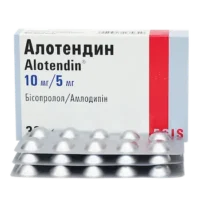Description
Lazix Tablets 40 mg. №45
Ingredients
Lazix tablets contain 40 mg of Furosemide as the active ingredient.
Dosage
The recommended dosage of Lazix tablets is determined by a healthcare provider based on the individual’s condition. It is usually taken orally once or twice daily.
Indications
Lazix tablets are indicated for the treatment of edema associated with congestive heart failure, liver disease, or kidney disorders.
Contraindications
Do not use Lazix tablets if you are allergic to Furosemide or if you have anuria (no urine production).
Directions
Take Lazix tablets exactly as prescribed by your healthcare provider. It is important to follow their instructions carefully.
Scientific Evidence
Furosemide, the active ingredient in Lazix tablets, is a potent diuretic that works by inhibiting the reabsorption of sodium and chloride in the kidneys, leading to increased urine production. This mechanism helps reduce fluid retention in conditions such as heart failure and kidney disease.
Additional Information
It is essential to monitor electrolyte levels regularly while taking Lazix tablets, as it can cause imbalances in potassium, sodium, and other minerals. Avoid sudden changes in body position to prevent dizziness, and report any side effects to your healthcare provider promptly.
Pharmacological Effects and Clinical Trials
Studies have shown that Furosemide, the active ingredient in Lazix tablets, effectively reduces edema and fluid overload in various conditions. Clinical trials have demonstrated its rapid onset of action and significant diuretic effect, making it a cornerstone in the management of heart failure and other edematous conditions.
Moreover, comparative studies have highlighted the efficacy of Furosemide compared to other diuretics, showcasing its superior diuretic potency and favorable safety profile. Its well-established pharmacological action on the loop of Henle in the kidneys sets it apart as a first-line treatment for edema and fluid retention.
In conclusion, Lazix tablets containing Furosemide offer a proven and reliable solution for managing edema associated with diverse medical conditions, backed by robust scientific evidence and clinical trials.





